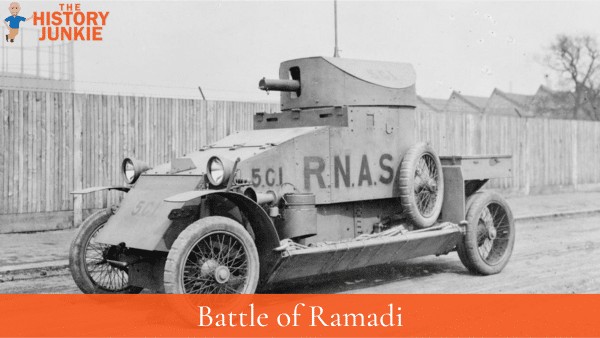After regrouping and recovering from the costly yet successful Samarrah Offensive in March-April 1917, British Commander-in-Chief Sir Frederick Stanley Maude renewed operations in Mesopotamia (modern-day Iraq) in late September 1917.
British Commander-in-Chief Sir Frederick Stanley Maude's first target in Mesopotamia (modern-day Iraq) was the flood-control station at Ramadi, situated on the east bank of the Euphrates River. The station was garrisoned by a large Turkish force.
An earlier attempt to seize the town in July had failed due to the searing heat and a well-organized Turkish defense.
Maude's second effort in September 1917 was better planned. He dispatched a division to march almost 62 miles northwest to Ramadi, amply supported by armored cars.
The Battle
The division attacked the town on September 28, 1917, on the east bank of the Euphrates. The Turkish garrison of 4,000 (reinforced by 1,000 during the earlier summer attack) was defeated, and the town was captured.
The Turkish defenders were prepared for an attack at the river bank but not for the British use of armored cars. The armored cars allowed the British to attack the Turkish force in the flank, while the cavalry was sent to circle around Ramadi and cut off the road to Hit.
The Turkish garrison was thus encircled, and the British seized numerous ridges above the town. The garrison attempted to escape on the night of September 28, but they were overtaken by cavalry.
The Turks surrendered on September 29, an unusually decisive victory for the British.
The British attempted to follow up their victory by capturing Hit, but they were unable to do so due to the poor road conditions. Nevertheless, the British captured Ramadi, which was a major strategic victory. They then turned their attention to capturing Tikrit, which they did in early November.

